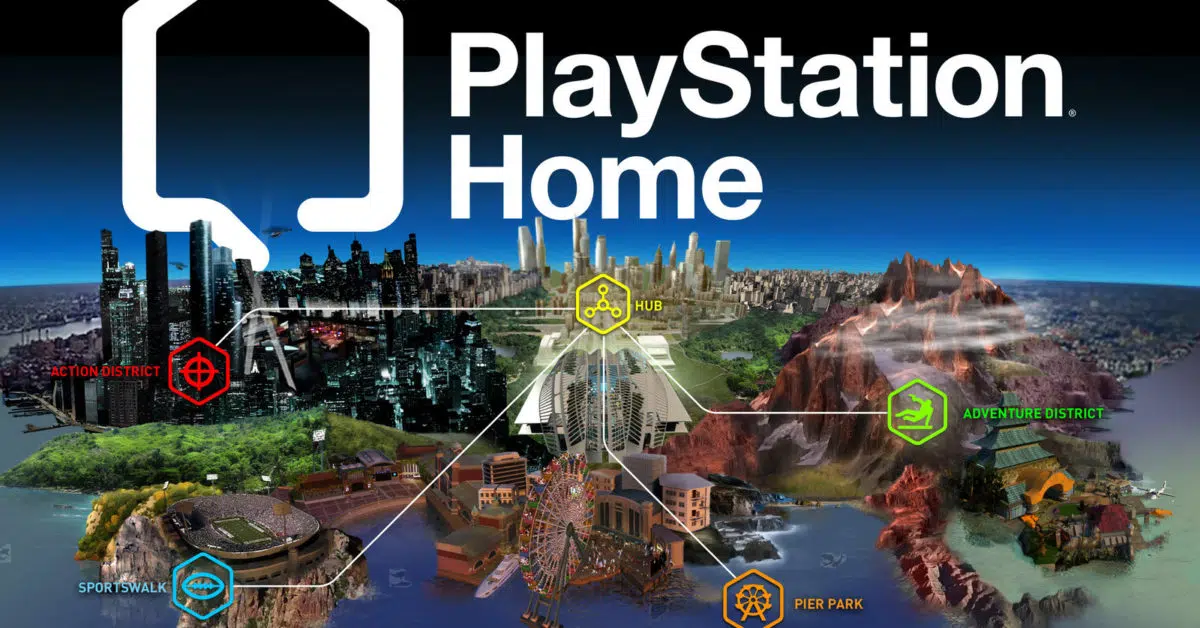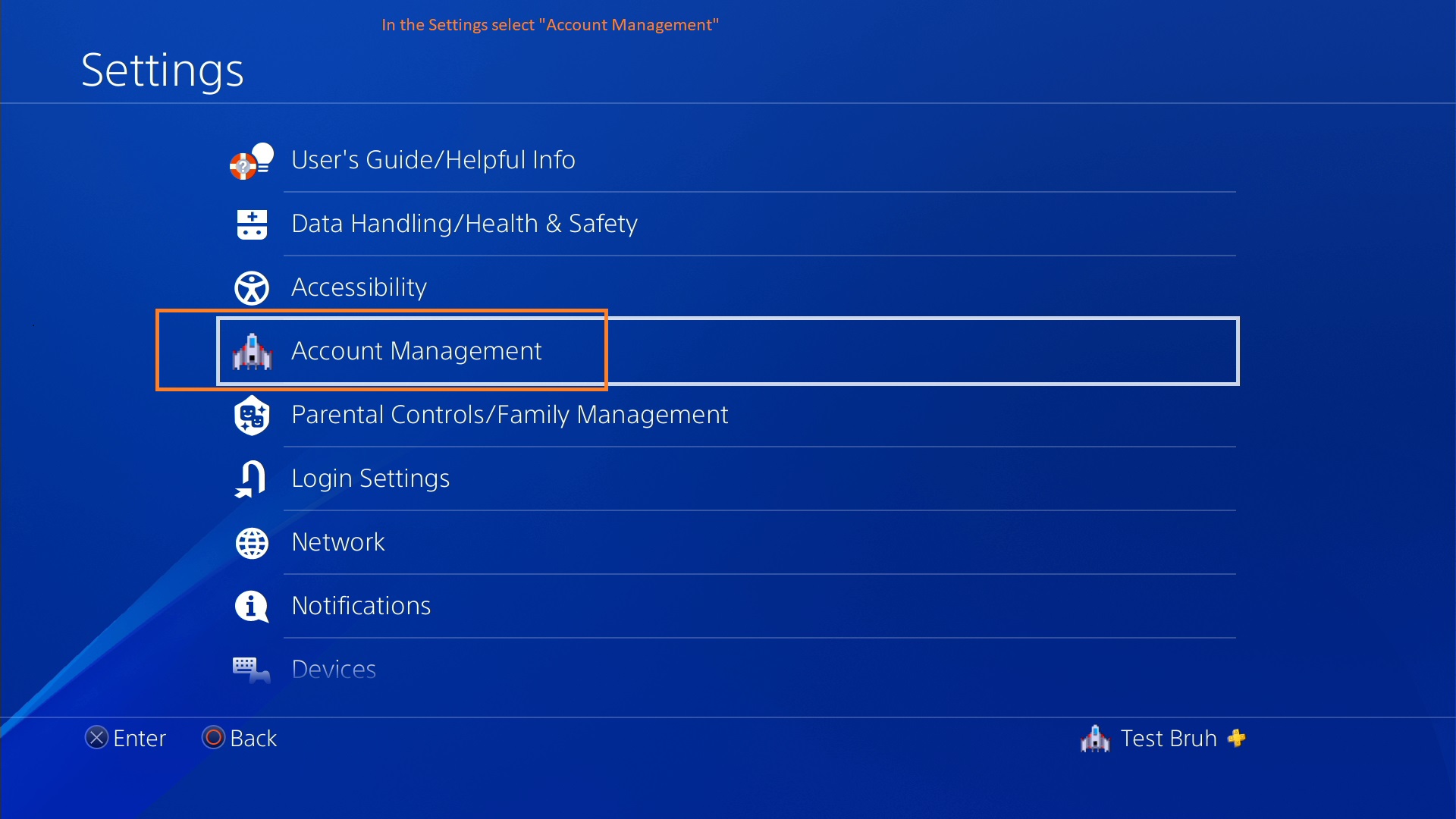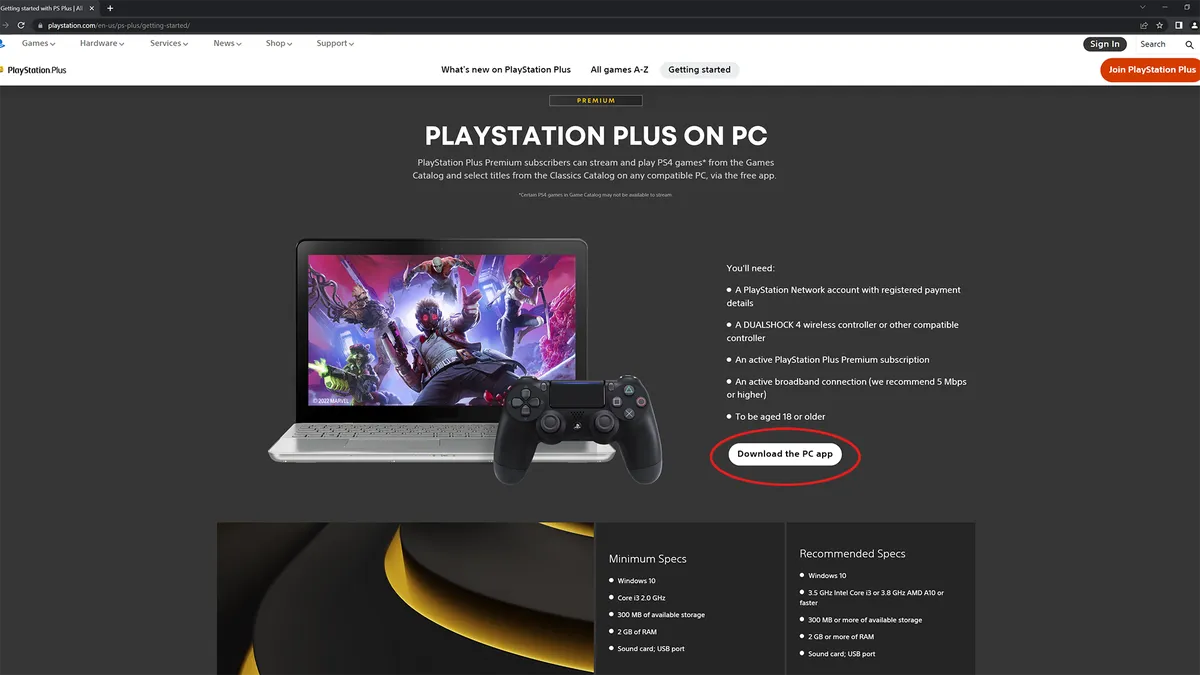Introduction
Welcome to the world of Playstation Home, an innovative and immersive virtual social platform that once captivated millions of gamers worldwide. Developed by Sony Computer Entertainment, Playstation Home offered a unique and interactive experience for Playstation 3 users, allowing them to create personalized avatars, explore virtual environments, and socialize with other players.
Launched in December 2008, Playstation Home aimed to create a virtual community where gamers could meet, chat, play games, and even participate in virtual events. With its lifelike graphics, customizable spaces, and numerous activities, it quickly became a popular feature on the Playstation 3 console.
Playstation Home was more than just a gaming experience – it was a social hub. Players could explore beautifully designed environments such as bustling city streets, luxurious apartments, and even themed game spaces. They were able to interact with each other through voice chat or text messaging, forming friendships and even organizing virtual gatherings and parties.
The platform offered a wide range of activities and games to keep users entertained. They could visit virtual arcades to play classic games, engage in multiplayer matches, or test their skills in various challenges. With regular updates, new locations, games, and items were added, ensuring that there was always something fresh and exciting for players to explore.
Playstation Home also provided a marketplace where users could purchase virtual goods such as clothing, furniture, and accessories to further customize their avatars and living spaces. Whether it was sporting the latest fashion trends or decorating their virtual homes, players had the freedom to express their unique style and creativity.
However, despite its initial success, Playstation Home eventually faced challenges that led to its decline. In this article, we will delve into the origins of Playstation Home, discuss its rise and popularity, explore its features and social aspects, examine the factors that contributed to its closure, and reflect on its legacy in the gaming industry.
Origins of Playstation Home
The concept of Playstation Home traces back to the early 2000s when Sony Computer Entertainment began envisioning a virtual world that would enhance the social aspect of gaming. The company aimed to create a space where Playstation users could connect, interact, and share experiences with each other.
The development of Playstation Home started in 2005 under the codename “Home.” The idea was to build a virtual community that would serve as a hub for gamers to meet, communicate, and engage in various activities. The team behind Playstation Home drew inspiration from popular social networking platforms and online virtual worlds, but they wanted to offer something unique for Playstation console users.
After years of planning and development, Playstation Home was finally unveiled to the public as a closed beta in 2008. This exclusive testing phase allowed a select group of users to explore and provide feedback on the platform, helping Sony fine-tune the experience before its official launch.
On December 11, 2008, Playstation Home was officially launched to the Playstation 3 community. It was met with excitement and anticipation, as gamers eagerly dove into this new virtual world. The platform was a free download and available to all Playstation 3 users, opening the doors to a multitude of possibilities.
Playstation Home’s creation was driven by the desire to provide a more immersive and social experience for gamers. It was envisioned as a space where players could not only play games but also interact with each other, forming connections and building virtual communities. The emphasis on social interaction set Playstation Home apart from traditional gaming experiences and added a new dimension to the Playstation console.
Through Playstation Home, Sony aimed to foster a sense of belonging and camaraderie among gamers. The platform allowed users to create their own unique avatars and customize their virtual living spaces, which further facilitated self-expression and personalization. These features emphasized the idea that Playstation Home was not just a game, but a virtual home where players could truly make their mark.
With its launch, Playstation Home instantly became a popular feature on the Playstation 3 console, attracting millions of users who were eager to explore this immersive and social gaming experience. The success of Playstation Home set the stage for an era of virtual community-building in the gaming industry, revolutionizing how players interacted and connected with each other.
The Rise and Popularity of Playstation Home
Following its launch in 2008, Playstation Home quickly gained traction and became a sensation among Playstation 3 users. Its unique concept and immersive features contributed to its rise in popularity, making it a go-to destination for gamers seeking a social and interactive experience.
One of the factors that contributed to the success of Playstation Home was its ability to cater to a wide range of interests. The platform offered a diverse array of virtual environments to explore, from trendy nightclubs to tranquil beach resorts and everything in between. This variety ensured that there was something for everyone, appealing to different tastes and preferences.
The social aspects of Playstation Home were also a significant draw for users. It provided a dynamic space for gamers to connect with others, form friendships, and engage in meaningful interactions. Whether through voice chat or text messaging, players could communicate with each other, coordinate gaming sessions, or simply chat about their shared interests.
Furthermore, Playstation Home hosted numerous virtual events and activities to keep users engaged and entertained. From exclusive game launches to live concerts, users had the opportunity to participate in exciting events that added an extra layer of fun and invited a sense of community. These events created memorable moments and encouraged players to revisit the platform regularly.
Playstation Home also attracted attention through its integration with popular game franchises. In partnership with various game developers, Sony incorporated themed spaces and interactive experiences based on well-known titles such as Uncharted, Assassin’s Creed, and Gran Turismo. This collaboration not only added a sense of familiarity for fans of these franchises but also introduced new players to the world of Playstation Home.
The concept of personalization was another aspect that contributed to the popularity of Playstation Home. Users could fully customize their avatars, from appearance and clothing to accessories and even gestures. This level of personalization allowed players to express their individuality and create a unique online presence, further enhancing the immersive and social nature of the platform.
As word of mouth spread and the user base grew, Playstation Home became a thriving virtual community. Users shared their experiences, recommended the platform to their friends, and organized their own social gatherings within the virtual world. This organic growth fueled the popularity of Playstation Home and solidified its position as a leading virtual social platform in the gaming industry.
The Features and Social Aspects of Playstation Home
Playstation Home revolutionized the gaming experience by offering a unique blend of gaming, socializing, and personalization. Its features and social aspects provided users with an immersive and interactive virtual world unlike anything seen before.
One of the standout features of Playstation Home was the ability to create and customize avatars. Users could design their virtual personas, selecting from a wide range of options such as appearance, clothing, accessories, and even animations. This level of customization allowed players to express their unique personalities and create a digital representation that truly represented them.
In Playstation Home, players could explore a vibrant and ever-expanding collection of virtual spaces. These environments ranged from virtual replicas of real-world cities to fantastical realms and themed game spaces. Each space had its own unique atmosphere, activities, and social opportunities, giving users a chance to discover new experiences and engage with the virtual world in exciting ways.
The virtual spaces in Playstation Home were not just static environments; they were interactive. Users could visit virtual arcades to play classic games or compete in multiplayer challenges. They could also engage in various mini-games and activities within the spaces, earning rewards, and virtual currency to further enhance their gaming experience.
Interacting and socializing with other players was a core aspect of Playstation Home. Users could communicate with each other through voice chat or text messaging, enabling instant connections with friends or strangers alike. This communication element fostered a sense of community and made it easy for players to share their gaming experiences, discuss common interests, or plan cooperative game sessions.
Beyond direct communication, Playstation Home provided social spaces where users could gather, chat, and participate in events together. Virtual public squares, nightclubs, and personal apartments became popular meeting points for players to hang out, showcase their avatars, interact with others or attend virtual parties and live performances.
Building on the social aspect, Playstation Home introduced virtual events and activities to keep users entertained. These events ranged from exclusive game launches and virtual movie premieres to live concerts and celebrity appearances. Users could participate in these activities, often offering unique rewards and a chance to interact with real-world personalities, making the virtual world feel alive and ever-evolving.
Additionally, Playstation Home had a marketplace where users could purchase virtual goods using the platform’s currency. From stylish clothing and accessories to furniture and even personal apartments, there was a vast catalog of items available for customization. This allowed users to further personalize their avatars and living spaces, reflecting their individual style and taste.
The features and social aspects of Playstation Home combined to create a dynamic and engaging virtual world. It provided users with a unique platform to meet new people, make connections, express themselves creatively, and share memorable experiences within a thriving online community.
Decline and Closure of Playstation Home
Despite its initial success and widespread popularity, Playstation Home faced a decline that ultimately led to its closure. Several factors contributed to this downturn, causing Sony Computer Entertainment to make the difficult decision to shut down the platform.
One of the primary reasons for the decline of Playstation Home was the rapidly changing landscape of the gaming industry. With the release of the Playstation 4 and the shift in focus to next-generation consoles, Sony had to prioritize resources and development on newer projects. This resulted in a decrease in updates and new content for Playstation Home, which led to a stagnation of the platform and a loss of interest from users.
Another contributing factor was the emergence and popularity of other online multiplayer games and social platforms. As players started migrating to games that offered more expansive social features and seamless multiplayer experiences, the appeal of Playstation Home began to diminish. The lack of competitive features and limited cross-platform compatibility also played a part in the platform’s decline.
Add to that, the rise of social media platforms and mobile gaming further fragmented the gaming community’s attention and time. With the convenience of accessing social platforms and playing games on the go, the allure of a dedicated virtual world like Playstation Home started to wane.
Furthermore, there were technical challenges and issues with the platform that affected user experience. Slow loading times, occasional crashes, and limited server capacity were some of the common complaints from users. These technical hurdles hindered the overall enjoyment of the platform and contributed to user attrition.
As the user base gradually dwindled, Sony made the difficult decision to shut down Playstation Home. The closure was announced in 2014, with the official shutdown occurring on March 31, 2015. This decision was met with mixed reactions from the community, with some expressing disappointment while others understood the reasons behind the closure.
The closure of Playstation Home marked the end of an era in the gaming industry. It signaled a shift in focus towards more mainstream online gaming experiences and the rise of social connectivity in online multiplayer games.
Despite its decline and ultimate closure, the impact of Playstation Home should not be overlooked. It paved the way for future virtual social platforms and showcased the potential for creating immersive and interactive online worlds. As technology continues to evolve, we may see new iterations of virtual communities that build upon the legacy of Playstation Home, offering even more engaging and innovative experiences for gamers.
Reasons for the Shutdown
The decision to shut down Playstation Home was not made lightly, as it had once been a beloved feature for many Playstation 3 users. However, several factors led to the eventual closure of the platform.
One of the main reasons for the shutdown was the significant shift in the gaming landscape. With the release of the Playstation 4, Sony focused its resources and development on the new console, diverting attention away from Playstation Home. The company had to make strategic decisions to prioritize the latest hardware and software advancements, leading to a reduced emphasis on supporting older features like Playstation Home.
The decline in user engagement and activity also played a role in the decision. As the novelty of the platform wore off and players shifted their focus to newer gaming experiences, the user base of Playstation Home gradually decreased. The lack of substantial updates and fresh content further contributed to a decline in user interest and participation over time.
Technical challenges and limitations were another factor in the shutdown of Playstation Home. The platform faced various technical issues, including slow loading times, occasional crashes, and server capacity constraints. These issues impeded the overall user experience and posed challenges for maintaining a reliable and enjoyable virtual world.
Additionally, the rise of social media platforms and the increasing popularity of mobile gaming also had an impact. The convenience and accessibility offered by social media platforms and mobile games attracted the attention and time of many gamers. As a result, the appeal of a dedicated virtual world like Playstation Home diminished as players sought out more immediate and socially-connected gaming experiences.
From a financial perspective, the cost of maintaining and updating Playstation Home likely became unsustainable for Sony. As the user base shrank and interest waned, the return on investment became less substantial. Allocating resources to other projects and ventures with higher potential for growth and profitability became a more viable option for the company.
Ultimately, the combination of these factors led to the decision to shut down Playstation Home. While it was a difficult and disappointing outcome for some dedicated users, it was a necessary step for Sony to adapt to the evolving gaming landscape and prioritize their resources for future endeavors.
Legacy of Playstation Home
Although Playstation Home may no longer be active, its impact on the gaming industry and the virtual social platform space cannot be denied. Its influence and legacy continue to resonate even years after its closure.
Firstly, Playstation Home paved the way for future virtual social platforms. It demonstrated the potential for creating immersive and interactive online worlds where players could socialize, explore, and engage in various activities. The concept of a virtual community that extends beyond traditional gaming experiences has been further expanded upon in subsequent platforms and games.
Playstation Home also showcased the power of customization and personalization. The ability to create unique avatars and customize living spaces became a sought-after feature in many games and platforms that followed. It demonstrated the importance of self-expression and individuality in virtual environments, allowing players to truly feel a sense of ownership and agency.
The social aspect of Playstation Home highlighted the desire for connected gaming experiences. The ability to interact with other players, form friendships, and engage in cooperative activities created a sense of community. This aspect has influenced the development of multiplayer games, where social interaction and cooperative gameplay have become integral components.
Furthermore, Playstation Home’s integration with popular game franchises introduced the concept of virtual tie-ins and crossovers. This feature allowed players to immerse themselves in themed game spaces and engage with content from their favorite franchises in new and interactive ways. The success of this integration has inspired subsequent collaborations in the gaming industry.
The closure of Playstation Home also marked a turning point in Sony’s approach to online social gaming. Lessons learned from Playstation Home’s experience likely influenced the development of subsequent social features and networks on both the Playstation 4 and Playstation 5 platforms. These newer iterations have incorporated lessons learned from Playstation Home to create more seamless and socially-engaging gaming experiences.
Overall, the legacy of Playstation Home lies in its pioneering spirit and innovative approach to social gaming. It demonstrated the possibilities of creating virtual communities and immersive interactive experiences. While the platform may no longer be active, its influence can still be felt in the gaming industry, inspiring new developments in virtual social platforms and shaping the way players connect and interact with one another in the digital realm.
Conclusion
Playstation Home was a groundbreaking virtual social platform that captivated millions of gamers during its time. It introduced a new way of experiencing gaming by combining social interaction, customization, and immersive virtual environments. While the platform eventually faced a decline and closure, its impact on the gaming industry remains significant.
From its origins as an ambitious project to its rise in popularity, Playstation Home provided a unique space for players to meet, chat, and engage in activities together. It showcased the power of personalization, allowing users to create and customize their avatars and living spaces to reflect their individuality.
The social aspects of Playstation Home fostered a sense of community and connectedness among players. The ability to communicate, form friendships, and participate in virtual events created an environment that went beyond traditional gaming experiences. Playstation Home paved the way for future social platforms, demonstrating the potential for creating immersive and interactive virtual worlds.
However, several factors contributed to the decline and eventual closure of Playstation Home. The shift in the gaming landscape, technical challenges, and the emergence of other social and gaming platforms all played a role in its demise. Despite the closure, the legacy of Playstation Home lives on through its impact on subsequent social features and the ongoing development of virtual community-building in the gaming industry.
In conclusion, Playstation Home was a groundbreaking platform that pushed the boundaries of social gaming. It provided a vibrant virtual world where players could connect, customize, and engage in activities together. While its closure marked the end of an era, its influence continues to shape the way we perceive and approach virtual social platforms in the gaming industry.

























